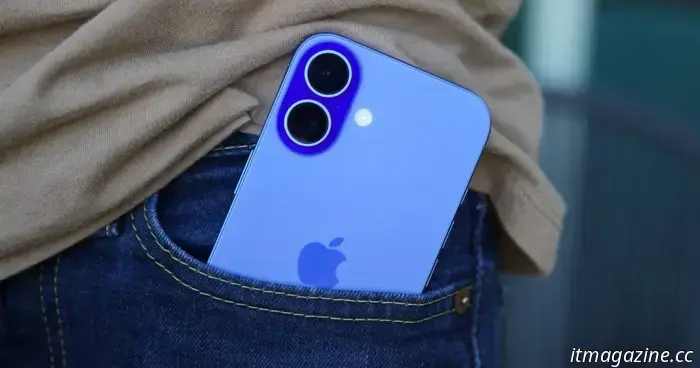
An iPhone theft victim is suing Apple, which raises fresh hope for others in similar situations.
Smartphones are at the heart of our digital lives, serving not only as tools for communication and social interaction but also as crucial custodians of our financial and professional information.
The impact of a stolen iPhone can be profound, complicating life in numerous ways, especially when it comes to retrieving valuable files stored on the device. Fortunately, a lawsuit against Apple may offer some victims of iPhone theft a chance at recovery.
As reported by The Washington Post, Michael Mathews, an iPhone theft victim, has initiated legal proceedings against Apple in the U.S. District Court for the Northern District of California. He is requesting access to two terabytes of data that encompasses his "entire digital life, including that of his family," as well as seeking $5 million in damages.
Corey Gaskin / Digital Trends
Mathews, a tech executive from Minnesota, had his iPhone stolen in Arizona. The device held not only personal information but also critical details related to his tax filings and professional research. The theft of his iPhone significantly hindered his life and caused his tech consulting firm to shut down.
Despite having substantial proof of ownership, Mathews alleges that Apple has declined to reset the Recovery Keys for his account, preventing him from regaining access to his data. The court complaint states, “In so doing, Apple perpetuates and aids the hackers in their criminal activity.”
What should you do if your iPhone is stolen?
In instances of a misplaced or stolen iPhone, Apple recommends that users promptly mark it as “Lost” on the Find My dashboard. This action will automatically lock the device with a passcode and suspend all payment cards and passes in the Wallet app.
Digital Trends
Apple also provides a feature called Stolen Device Protection, which secures sensitive actions such as viewing saved passwords and payment cards with Face ID or a fingerprint lock. This feature can recognize if the device is in an unusual location and block certain actions like disabling Find My tracking, removing payment cards, and accessing the password keychain.
Users can also reset their password and modify sensitive information such as trusted phone numbers, emails, and recovery methods from the Apple account dashboard. Additionally, users have the option to remotely wipe all data from their lost iPhone. However, this is irreversible, and the deleted data cannot be recovered.
What’s next?
Remote data deletion is not an option that many users would prefer, particularly if it holds sensitive work-related, legal, or financial information. This makes the situation more complex, as Apple lacks a universal system for recovering data from a lost device, unless everything was backed up in the cloud.
“On what grounds do you keep your users’ data and not return it?” questions the legal representative in the lawsuit against Apple. The path forward may be challenging, with evidence collection and legal proceedings taking up to eight months before a court order for Apple’s compliance can be issued.
Julian Chokkattu/Digital Trends
However, even the aforementioned protections can fail if the victim does not take prompt action. A thief who learns your passcode could disable the safeguards provided by Apple, such as changing the linked email address and recovery details, effectively locking the rightful owner out.
This could lead to a critical dead end. “If you lose your recovery key and can’t access one of your trusted devices, you’ll be permanently locked out of your account,” states Apple. While the data stored in the cloud remains accessible, experts assert that Apple simply chooses not to return it to the rightful owner of the stolen iPhone.
A flicker of hope?
Another issue is that not all iPhone users are familiar with features such as Stolen Device Protection and Advanced Data Protection. The latter encrypts all data in iCloud, including backups, messages, notes, photos, reminders, Safari bookmarks, and voice memos.
Nadeem Sarwar / DigitalTrends
This encryption means that even Apple cannot access the data. Therefore, if a device is stolen and Advanced Data Protection is enabled, recovery is only possible if the stolen device is retrieved or if proactive measures are taken before the thief can alter sensitive account information.
Time is of the essence in such situations, especially against a clever thief.
Additionally, Apple’s claimed privacy-centric approach can often obstruct recovery efforts for genuine victims. The most reliable paths for assistance typically involve local law enforcement or an extensive legal battle.
Not everyone can afford either option, but the recent lawsuit may offer a glimmer of hope. Jon Breyer, the attorney representing the case against Apple, reportedly has nearly a dozen other clients facing similar dilemmas. It will be intriguing to see if Apple decides to assist all of them or, better yet, establishes a more effective system to support victims of iPhone theft.




Other articles
 7 top Michael B. Jordan films, ranked
Michael B. Jordan is one of Hollywood's most notable stars. In celebration of Sinners, here are Jordan's top films.
7 top Michael B. Jordan films, ranked
Michael B. Jordan is one of Hollywood's most notable stars. In celebration of Sinners, here are Jordan's top films.
 Lost Records: Bloom & Rage is excellent, but it shouldn't have been split into two parts.
Lost Records: Bloom & Rage is an excellent narrative adventure game; however, its launch negatively impacted its reception.
Lost Records: Bloom & Rage is excellent, but it shouldn't have been split into two parts.
Lost Records: Bloom & Rage is an excellent narrative adventure game; however, its launch negatively impacted its reception.
 Fortnite is set to feature another collaboration with Star Wars, this time introducing Jar Jar Binks.
Star Wars is making a comeback in Fortnite with a five-part storyline and new character skins.
Fortnite is set to feature another collaboration with Star Wars, this time introducing Jar Jar Binks.
Star Wars is making a comeback in Fortnite with a five-part storyline and new character skins.
An iPhone theft victim is suing Apple, which raises fresh hope for others in similar situations.
Apple provides strong anti-theft and data protection features. However, malicious individuals have become more clever, making it increasingly difficult to retrieve lost data.
